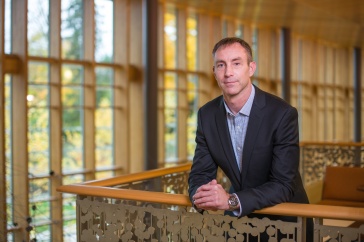
Research led by Wei Wei, assistant professor of decision sciences at the UNH Peter T. Paul College of Business and Economics, proposes a novel solution to address inequities in welfare fund allocation, potentially increasing societal impact while eliminating disparities.
Subsidy welfare programs are critical in ensuring that economically disadvantaged individuals and families can access essential services such as child care, education, healthcare and housing. However, current funds allocation formulas may fail to ensure equitable outcomes across different service areas.
Research led by Wei Wei, assistant professor of decision sciences at the UNH Peter T. Paul College of Business and Economics, proposes a novel optimization-based model to help ensure more equitable outcomes.
In a recent study published in Manufacturing & Service Operations Management, researchers applied the optimization-based model to a case study involving the Massachusetts child care subsidy program, resulting in a 3% increase in societal impact while eliminating inequity.
To illustrate the difference between equity and equality, Wei describes three children trying to watch a baseball game over a fence. In an equal scenario, each child gets the same number of bricks to stand on, still leaving the shortest child unable to see. In an equitable scenario, bricks are distributed according to each child's height, ensuring all three can see the game.
“Equity is about ensuring similar levels of societal impact and outcomes across different service areas, not equal funding to each area,” Wei says.
States currently use formula-based methods or simple approaches to distribute funds equally or proportionally across different geographies based on factors such as the number of beneficiaries or service providers in each area.
This approach focuses on providing resources uniformly without considering the unique challenges within each area, according to Wei. For example, current methods overlook the proportion of providers who accept subsidies versus those who do not. Different areas may have different ratios of these providers, affecting how effectively the funds are used.
Additionally, current allocation methods don’t consider the effectiveness of different types of investments in each area. In particular, in some areas, investing in training for child care providers might improve care quality significantly, while in others, investing in

outreach to increase the number of providers accepting subsidies might be more beneficial.
When applied to the Massachusetts child care subsidy program, the model addressed these shortfalls and recommended multiple improvements to better balance societal impact across different areas, including:
- Addressing unique needs: Recognizing the needs and challenges of different service areas. For example, rural areas with fewer child care providers due to lower population densities and greater geographic spread require funding for mobile child care units to reach families in remote locations and incentives and resources to attract more providers to participate in the subsidy program.
- Urban area challenges: Recognizing that urban areas like Boston face higher operating costs and greater demand for child care services and require funding to cover higher rents, wages and utilities.
- Future funds consideration: Accounting for potential future funds, like federal grants from programs like the CARES Act, ensuring resources could be distributed efficiently and enabling adjustments based on funding changes and needs.
“We presented our findings to the Massachusetts Department of Early Education and Care, and they were interested in our findings,” Wei says. “Hopefully, we can nudge them to adopt our method.”
Wei acknowledges that changes like this can take time, and it could be challenging to convince stakeholders, including nonprofit organizations and government agencies, of the importance of equity, especially if the current funding allocations adequately address their needs.
“Formula-based methods are widely accepted by nonprofit organizations and the government,” Wei says. “They are easy to use, and sometimes the outcomes can generate an acceptable level of societal impact and equity.”
Researchers believe their optimization-based model would ensure greater equity, creating a balanced and effective system that benefits all areas and families equitably.
Wei collaborated on the research with Priyank Arora, assistant professor of management science at the University of South Carolina, and Senay Solak, professor of operations and information management at the University of Massachusetts Amherst.
Future research could expand the model's application to other state subsidy programs to validate its effectiveness in different contexts.
-
Written By:
Aaron Sanborn | Peter T. Paul College of Business and Economics | aaron.sanborn@unh.edu





















































